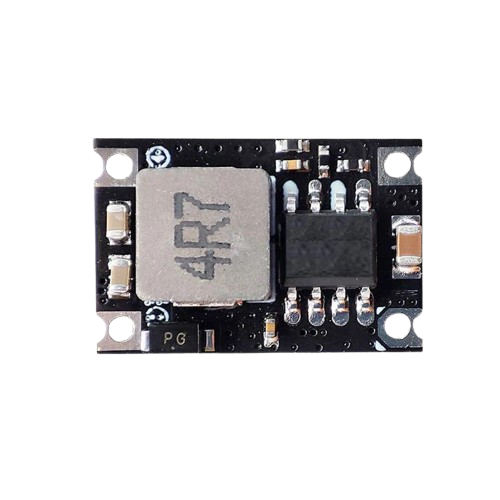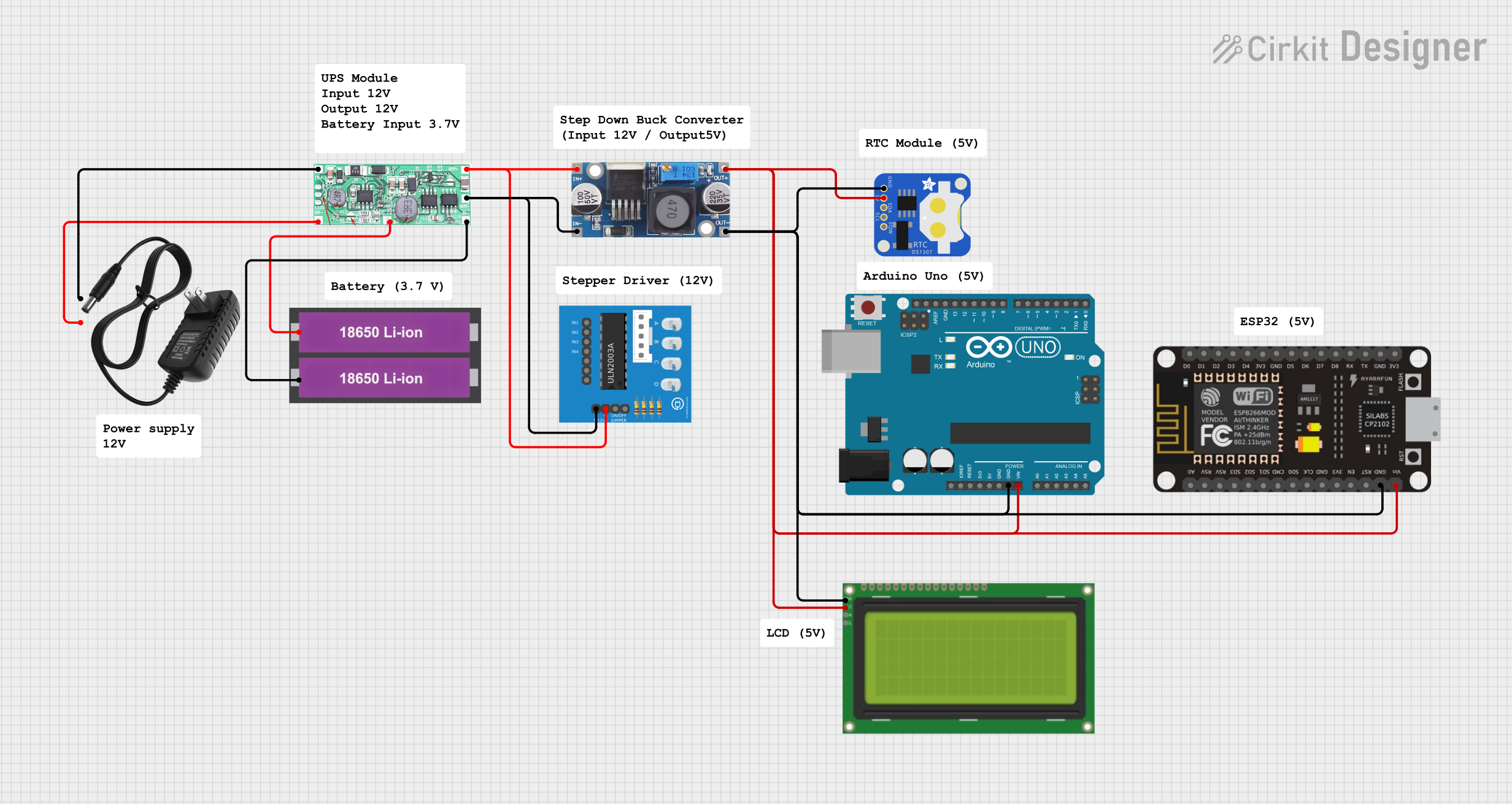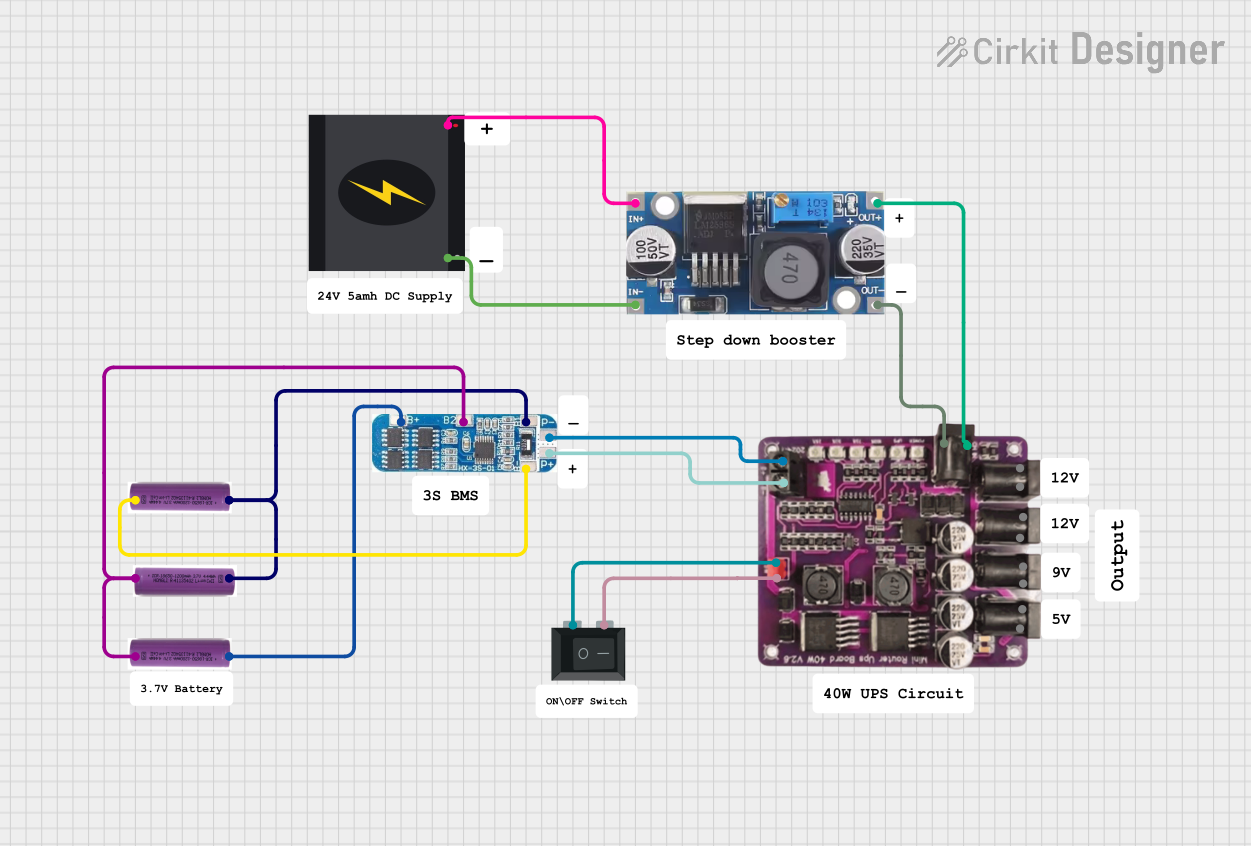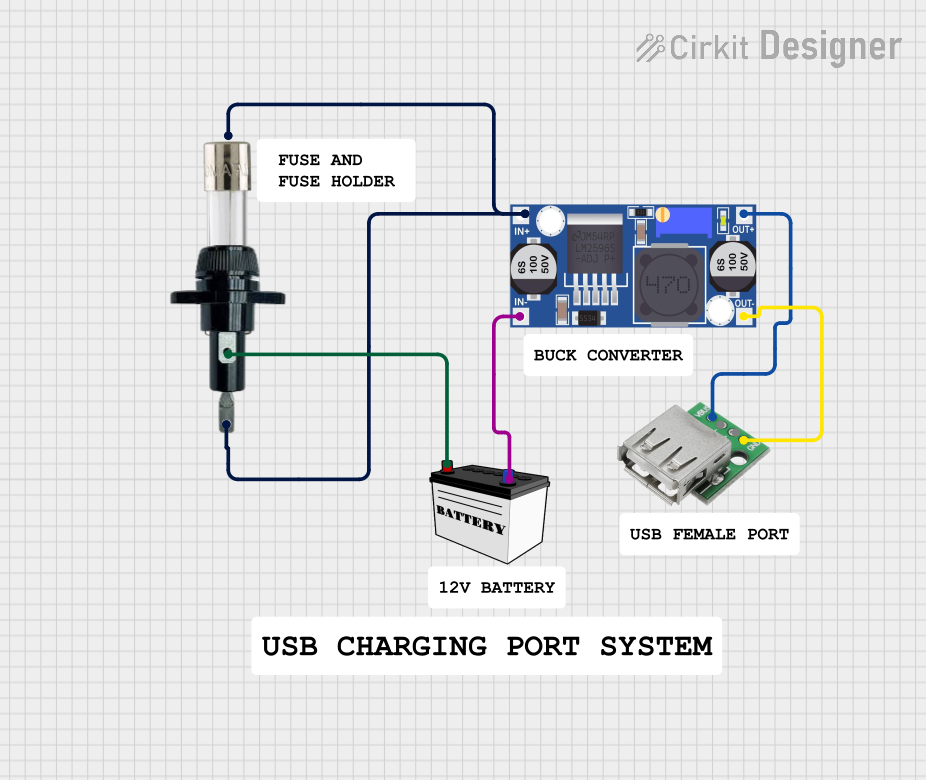
How to Use Ultra-Small Size DC-DC 5V 3A BEC Power Supply Buck Step Down Module: Examples, Pinouts, and Specs

 Design with Ultra-Small Size DC-DC 5V 3A BEC Power Supply Buck Step Down Module in Cirkit Designer
Design with Ultra-Small Size DC-DC 5V 3A BEC Power Supply Buck Step Down Module in Cirkit DesignerIntroduction
The Ultra-Small Size DC-DC 5V 3A BEC Power Supply Buck Step Down Module by Robu is a compact and efficient DC-DC converter designed to step down a higher input voltage to a stable 5V output. With a maximum current output of 3A, this module is ideal for powering low-voltage devices such as microcontrollers, sensors, and other electronic components. Its small size and high efficiency make it suitable for space-constrained applications.
Explore Projects Built with Ultra-Small Size DC-DC 5V 3A BEC Power Supply Buck Step Down Module

 Open Project in Cirkit Designer
Open Project in Cirkit Designer
 Open Project in Cirkit Designer
Open Project in Cirkit Designer
 Open Project in Cirkit Designer
Open Project in Cirkit Designer
 Open Project in Cirkit Designer
Open Project in Cirkit DesignerExplore Projects Built with Ultra-Small Size DC-DC 5V 3A BEC Power Supply Buck Step Down Module

 Open Project in Cirkit Designer
Open Project in Cirkit Designer
 Open Project in Cirkit Designer
Open Project in Cirkit Designer
 Open Project in Cirkit Designer
Open Project in Cirkit Designer
 Open Project in Cirkit Designer
Open Project in Cirkit DesignerCommon Applications
- Powering microcontrollers (e.g., Arduino, Raspberry Pi, ESP32)
- Robotics and drones
- Battery-powered devices
- Portable electronics
- IoT devices and sensors
Technical Specifications
Below are the key technical details of the module:
| Parameter | Value |
|---|---|
| Input Voltage Range | 6V to 26V |
| Output Voltage | 5V (fixed) |
| Maximum Output Current | 3A |
| Efficiency | Up to 92% |
| Dimensions | 22mm x 17mm x 4mm |
| Weight | ~3g |
| Operating Temperature | -40°C to +85°C |
Pin Configuration and Descriptions
The module has three pins for input and output connections:
| Pin Name | Description |
|---|---|
| VIN | Input voltage (6V to 26V) |
| GND | Ground (common for input and output) |
| VOUT | Regulated 5V output |
Usage Instructions
How to Use the Module in a Circuit
Connect Input Voltage:
- Connect the positive terminal of your power source (6V to 26V) to the
VINpin. - Connect the negative terminal of your power source to the
GNDpin.
- Connect the positive terminal of your power source (6V to 26V) to the
Connect Output Load:
- Connect the device or circuit requiring 5V to the
VOUTpin. - Ensure the
GNDpin is also connected to the ground of your load.
- Connect the device or circuit requiring 5V to the
Verify Connections:
- Double-check all connections to avoid reverse polarity or short circuits.
Power On:
- Turn on the power source. The module will regulate the input voltage to a stable 5V output.
Important Considerations and Best Practices
- Input Voltage Range: Ensure the input voltage is within the specified range (6V to 26V). Exceeding this range may damage the module.
- Heat Dissipation: At higher currents (close to 3A), the module may generate heat. Use proper ventilation or a heatsink if necessary.
- Polarity Protection: The module does not have built-in reverse polarity protection. Double-check the polarity of your connections.
- Load Requirements: Ensure the connected load does not exceed the maximum output current of 3A.
Example: Using with Arduino UNO
The module can be used to power an Arduino UNO from a 12V battery. Below is an example circuit and code:
Circuit Connections
- Connect the
VINpin of the module to the positive terminal of the 12V battery. - Connect the
GNDpin of the module to the negative terminal of the battery. - Connect the
VOUTpin of the module to the5Vpin of the Arduino UNO. - Connect the
GNDpin of the module to theGNDpin of the Arduino UNO.
Example Code
// Example code to blink an LED connected to pin 13 of Arduino UNO
// Ensure the Arduino is powered via the 5V output of the DC-DC module
void setup() {
pinMode(13, OUTPUT); // Set pin 13 as an output
}
void loop() {
digitalWrite(13, HIGH); // Turn the LED on
delay(1000); // Wait for 1 second
digitalWrite(13, LOW); // Turn the LED off
delay(1000); // Wait for 1 second
}
Troubleshooting and FAQs
Common Issues and Solutions
No Output Voltage:
- Cause: Incorrect input voltage or loose connections.
- Solution: Verify that the input voltage is within the 6V to 26V range and check all connections.
Overheating:
- Cause: Excessive current draw or poor ventilation.
- Solution: Ensure the load does not exceed 3A. Use a heatsink or improve airflow around the module.
Output Voltage Not Stable:
- Cause: Input voltage fluctuations or insufficient input power.
- Solution: Use a stable power source and ensure the input voltage is at least 1V higher than the output voltage.
Module Not Working After Connection:
- Cause: Reverse polarity or short circuit.
- Solution: Check the polarity of the input connections. Replace the module if it is damaged.
FAQs
Q1: Can this module be used to power a Raspberry Pi?
A1: Yes, the module can power a Raspberry Pi, but ensure the current draw does not exceed 3A.
Q2: Does the module have overcurrent protection?
A2: No, the module does not have built-in overcurrent protection. Use an external fuse if necessary.
Q3: Can I adjust the output voltage?
A3: No, the output voltage is fixed at 5V and cannot be adjusted.
Q4: Is the module suitable for automotive applications?
A4: Yes, as long as the input voltage is within the specified range and proper precautions are taken for heat dissipation.